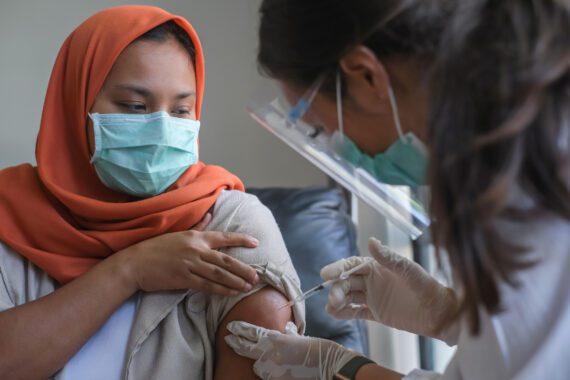By Todd Post
Older generations are the only Americans who can remember when, in the late 1960s, searing reports of child hunger were making headlines. The conditions in places seldom filmed by news crews were shocking. Senator Robert F. Kennedy found young children in the Mississippi Delta who were suffering from malnutrition as severe as that of children in countries where most families had few resources and harvest failures meant hunger for many people. But the United States could afford to feed its children.
Kennedy and other leaders pushed for major improvements in the federal government’s nutrition safety net. The changes included the creation of a significant new initiative—the Special Supplemental Nutrition Assistance Program for Women, Infants, and Children, usually known simply as WIC. By any measure, WIC is an extraordinary success story. A wealth of research studies document the short- and long-term positive impacts of participating in the program on children’s health and development.
Several other federal nutrition programs also help connect children with nutritious food: school meals, summer meals, a program for younger children in pre-K and daycare. And SNAP is the largest child nutrition program of all: nearly half of SNAP participants are children.
We can see that in some ways, the United States has done a lot to reduce child hunger since the 1960s. In other ways, it has not done nearly enough: millions of children still live in households that struggle to put food on the table. A major reason for child hunger is neglect of the needs of parents. Neither the U.S. government nor the private sector seems to realize a basic truth: if parents are to provide sufficient nutritious food for their children, they must be paid a livable wage.
No family has enough to eat if the grocery budget comes from nutrition programs alone. Researchers continue to show the health benefits for children of a higher minimum wage, including gains in birth weight. Meanwhile, low-wage workers are losing ground. Not only has the federal minimum wage been fixed at $7.25 an hour since 2009—nearly 12 years—but it is not indexed to inflation. In today’s dollars, the buying power of that $7.25 is only $5.85. As Bread for the World pointed out in our 2018 Hunger Report, wages have been largely disconnected from productivity for the four decades since 1980. In other words, the gains from workers’ increasing productivity have gone not to them, but to their employers. If the minimum wage had kept pace with productivity and inflation, it would be $24 an hour in 2020 dollars. This is a major reason for rising income inequality in our country.
The passage of the American Rescue Plan is a major victory for lower-income Americans. One major weakness is that the final bill does not include the original proposal to gradually increase the minimum wage to $15 an hour. Under Senate rules, this provision could not be passed with a simple majority of 51 to 50, so it had to be dropped from the larger bill.
A truly significant improvement within the American Rescue Plan is an expansion of the Child Tax Credit (CTC). The amount of the credit will increase to $3,600 annually for a child younger than 6 and $3,000 for a child ages 6-17. It will be distributed monthly. This means that parents will be able to feed their children for the entire month rather than going for days, sometimes weeks, without grocery money as they wait for their next payday and/or their next monthly SNAP benefit. SNAP prevents millions of Americans from going hungry, but its benefit levels are low. Participating households very often use up their allotment only halfway through the month.
The most important improvement of all is that under the new law, all families will be eligible for the credit. Previously, families had to have a certain amount of taxable income to claim the full credit, which excluded the poorest families—those most likely to be food insecure—or gave only partial credit. An estimated 27 million children under 17 live in families who did not earn enough to qualify for the full credit, and millions received nothing at all.
Anti-hunger advocates have called the CTC expansion the biggest improvement for hungry children in many years. Researchers estimate that the changes could cut the child poverty rate nearly in half. Families of color are the most likely to be newly eligible for the full CTC—a projected 70 percent of the children lifted over the poverty threshold will be Black or Latino/a.
This is great news, but the country still has a long way to go, both to end childhood hunger and to reduce the racial inequities of childhood hunger. The COVID-19 pandemic has caused dramatic increases in child hunger. In almost every survey conducted over the past year, more than one in four Black or Latino/a parents reported that their children weren’t eating enough because the household didn’t have enough money.
Another problem is that in the new legislation, the CTC expansion is for only one year. The congressional majority will seek to make the improvements permanent, and this plan may very well succeed. Ronald Reagan is quoted as saying, “Nothing lasts longer than a temporary government program.” Whether this was meant sarcastically or not, it should certainly come true in this case. There are enormous needs, and there is also precedent: WIC began as a temporary program.
Todd Post is senior researcher, writer, and editor with Bread for the World Institute.



